The Intel SSD 760p 512GB Review: Mainstream NVMe Done Right
by Billy Tallis on January 23, 2018 11:30 AM ESTAnandTech Storage Bench - Heavy
Our Heavy storage benchmark is proportionally more write-heavy than The Destroyer, but much shorter overall. The total writes in the Heavy test aren't enough to fill the drive, so performance never drops down to steady state. This test is far more representative of a power user's day to day usage, and is heavily influenced by the drive's peak performance. The Heavy workload test details can be found here. This test is run twice, once on a freshly erased drive and once after filling the drive with sequential writes.

The average data rate of the Intel SSD 760p on the Heavy test makes it clear that the 760p is not a high-end NVMe drive, but it does perform much better than SATA SSDs and previous low-end NVMe SSDs. The 760p also handles being full relatively well, so its SLC caching strategy seems well done.
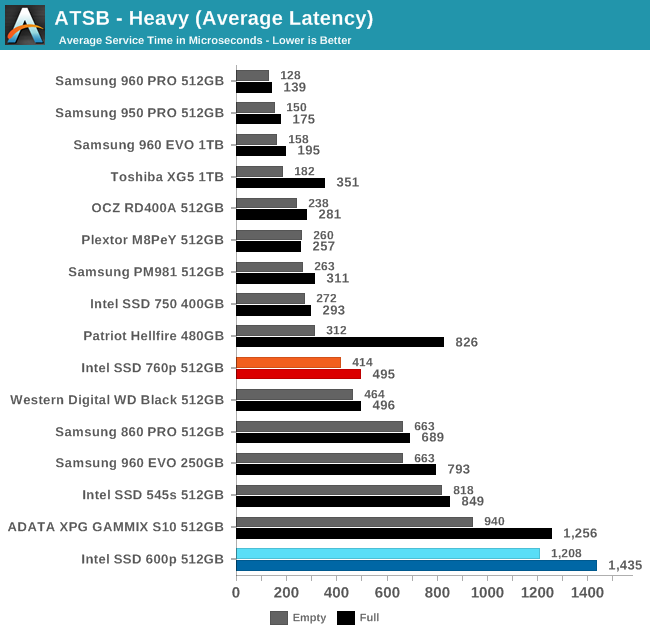
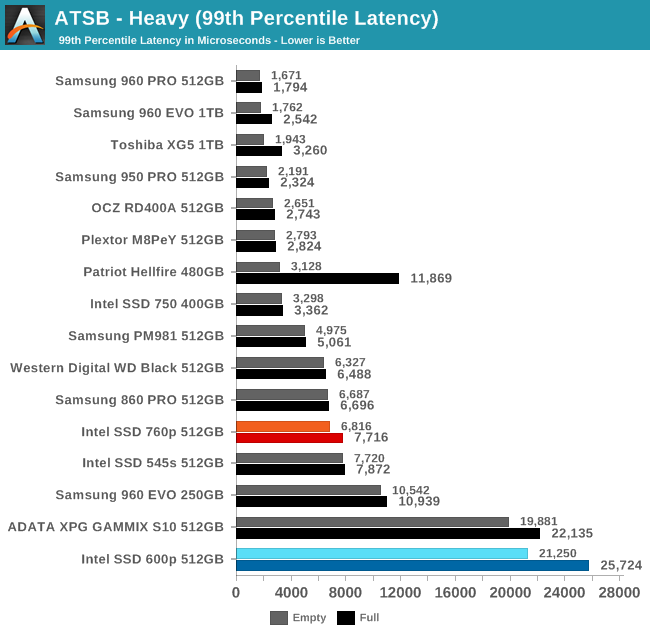
The average and 99th percentile latency scores of the 760p aren't great, but they're still a big improvement over most earlier low-end NVMe SSDs. The 99th percentile latency has more room for improvement, since it is no better than a good SATA SSD.
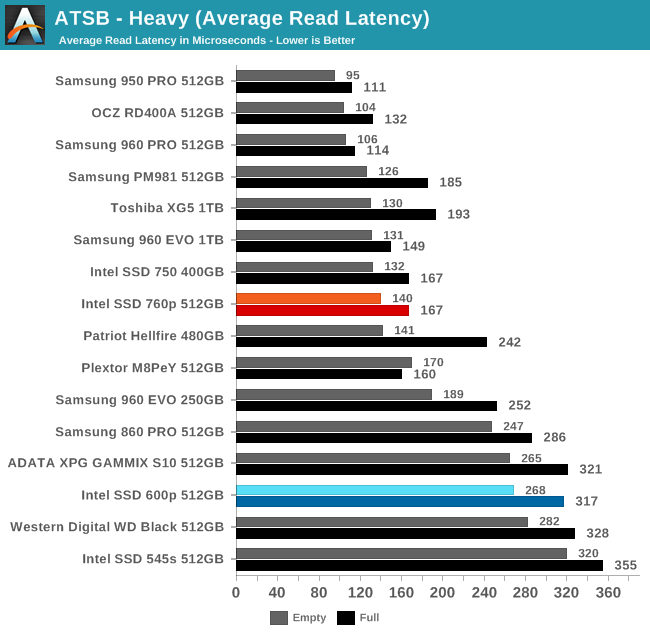
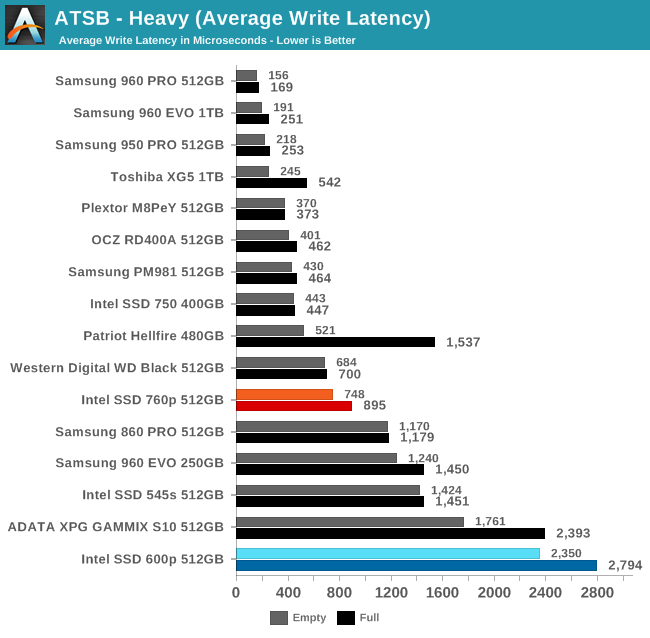
The average read latencies of the Intel SSD 760p on the Heavy test are not quite as good as a high-end NVMe SSD but are definitely close enough for a product this cheap. The average write latencies are more in line with some of the better previous budget NVMe SSDs, and are close to the level of SATA SSDs.
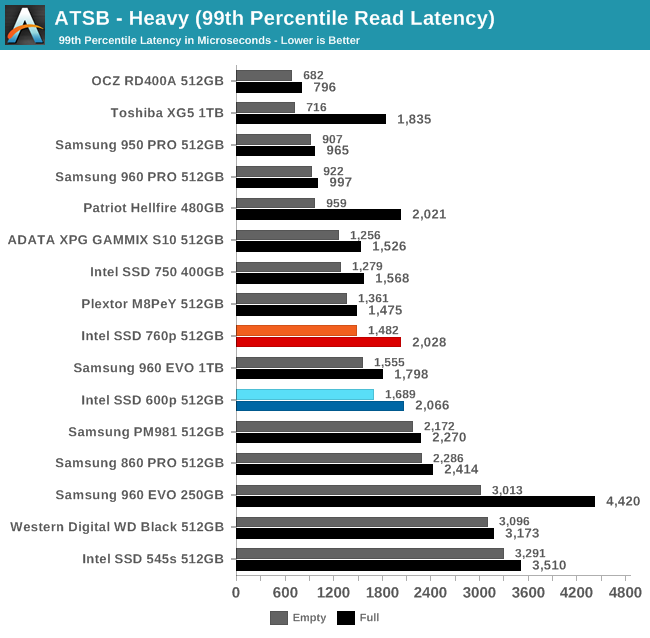
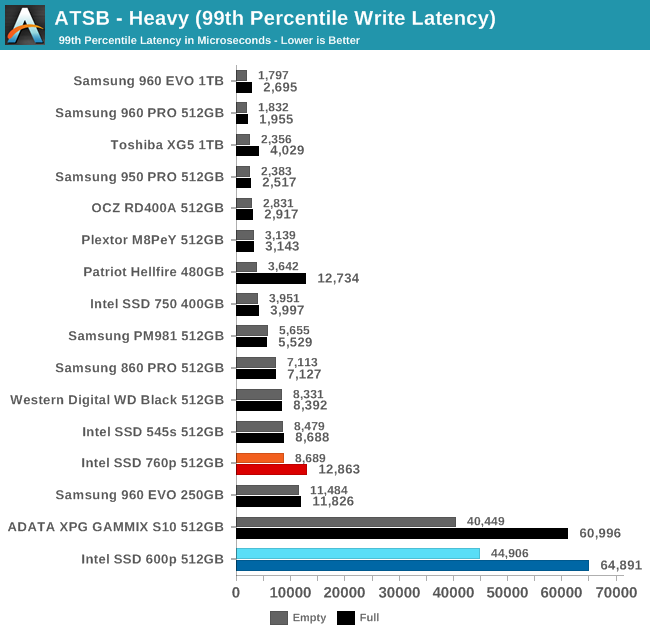
The 99th percentile read latencies from the Intel 760p don't particularly stand out, and are reasonable for this product segment. The 99th percentile write latency scores are rather high, but not to egregiously like the Intel SSD 600p and a similar ADATA drive.
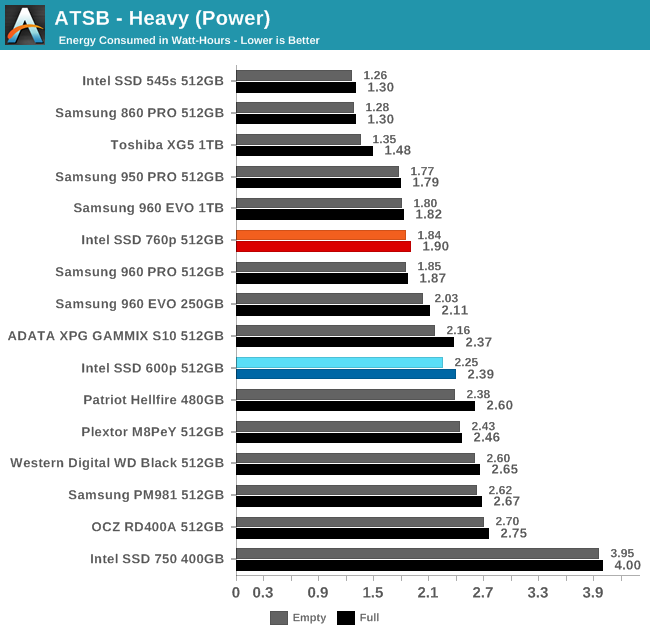
As with The Destroyer, the Intel SSD 760p shows very good power efficiency by NVMe standards, but the SATA drives and the Toshiba XG5 show that there's still room for much improvement.










51 Comments
View All Comments
Dr. Swag - Tuesday, January 23, 2018 - link
What happened to your performance consistency tests?ImSpartacus - Wednesday, January 24, 2018 - link
I'm glad I wasn't the only one that noticed them missing.I'd love to get a comment on why that is omitted.
SleepyFE - Saturday, January 27, 2018 - link
Just assume it's not consistent enough to measure up. It is an Intel product after all. If they don't won't it published it won't be.jjj - Tuesday, January 23, 2018 - link
Fair perf for the price but not exciting.Any word on a timing for their lower end 660p QLC based drive?
HStewart - Tuesday, January 23, 2018 - link
So this does not used Micron memory, I remember reading that Intel stop work with Micron - maybe this is part of it.This is aim and price at lower end market - and came out at same time as the 860, maybe Intel has a faster one coming later this year. If so that is actually very smart on Intel's part.
edzieba - Tuesday, January 23, 2018 - link
The Micron logo is printed right there on the packages for all to see...emvonline - Tuesday, January 23, 2018 - link
thats dramHStewart - Tuesday, January 23, 2018 - link
Yes - I see that but did Intel designed the memory - also a lot of times company purchase other products in there own products - Intel has done this with AMD GPU's because it feels a hole with discrete GPU until they can provide a replacement.msabercr - Tuesday, January 23, 2018 - link
All the nand is IMFT, Intel has just also leveraged their own fabs to produce more for themselves. All the nand designs are joint venture.jjj - Tuesday, January 23, 2018 - link
Intel and Micron will stop developing NAND together with their 4th gen, this is the second gen, 3rd gen starts prod in second half of 2018 and 4th gen comes 1 year or more later. So you'll see products with that in 2020.Intel has it's own fab now , producing NAND developed with Micron (and so does Micron ofc) but Intel still has supply agreements (at cost) with Micron and those expire in 2018 and 2019.